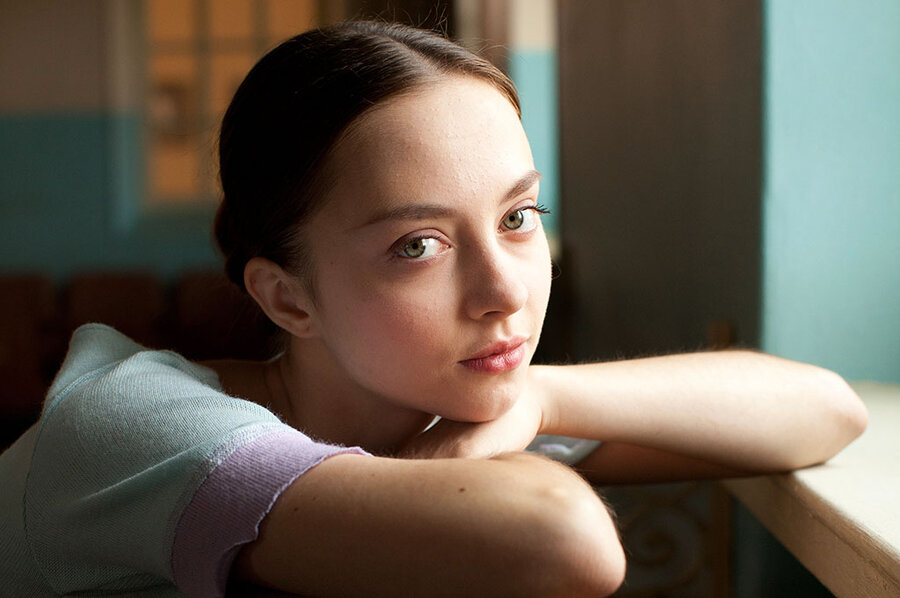In ‘Polina,’ a ballerina pursues contemporary
Loading...
Movies about dancers are often unsatisfying both as drama and as studies of bodies in motion. Partly this is because not many directors know how to photograph dance but also because not many trained dancers are good actors, and vice versa. Also, the plotlines that coalesce around the dancers’ lives are often riddled with clichés.
“Polina,” based on a graphic novel by Bastien Vivès and co-
directed by French choreographer Angelin Preljocaj and screenwriter Valérie Müller, is about a gifted young Russian ballerina who leaves behind her classical training to pursue contemporary dance, with mixed results. The movie, too, is a mixed bag.
As a young girl, Polina is played by Veronika Zhovnytska, and as a young adult by Anastasia Shevtsova, who in real life dances with the famed Mariinsky Theatre in St. Petersburg, Russia. Polina is the only daughter of a working-class family whose father falls in with the underworld to pay for her training at the Bolshoi Ballet. When rough-stuff mobsters showed up at the family’s apartment, I knew the film was in trouble, too.
Except that, for the most part, the filmmakers avoid heavy-
handed melodrama in favor of what could be called heavy-handed pseudo-drama. The movie often seems on the verge of being interesting but repeatedly retreats into a formless vapidity.
It begins promisingly, if predictably, with Polina’s exhaustive training at the hands of Bojinski (Alexsei Guskov), her no-
nonsense teacher. His gruffness, of course, implies she’s worth being gruff about. But then, just as she is about to make her mark as a Bolshoi newbie, she becomes enraptured with modern dance when she watches a French troupe. Or, to be more precise, when she swoons over Adrien (Niels Schneider), one of the company’s lissome dancers.
Her sense of liberation with modern dance is not entirely a matter of romantic longing, even though she leaves the Bolshoi and follows Adrien to France. We have been prepared for this changeover in an earlier scene – the best in the movie – when we see Polina, after a Bolshoi rehearsal, suddenly breaking into a free-form dance on her walk home, with the snow falling as if it were dancing right alongside her. (Nuclear power plants stand ominously in the far distance.)
In moments like these, we can feel almost kinesthetically Polina’s love of movement. But Shevtsova, who dances well, is, alas, something of a blank as an actress. The filmmakers don’t allow her many scenes where she significantly interacts with other people, and so we are left with long stretches in which she gazes fixedly into the middle distance, looking inscrutable, as she contemplates the downward spiral of her life. The young woman who flung herself into happiness in the snow doesn’t otherwise jibe with this masklike maiden who comes across like a refugee from a European existential art film. (In European art-house fare, silence is more golden than talk.)
Muteness certainly isn’t a problem with many of the other dancers and instructors in this film, starting with Bojinski and, even more so, with Polina’s French modern dance mentor, played by Juliette Binoche with the kind of tough love hauteur that is so much a cliché of these dance movies that it must represent the real deal. (Has there ever been a choreographer in a dance movie who was, you know, lovey-dovey?)
It’s good to see Binoche here if for no other reason than, unlike most of the other performers, she is both a trained actress and a trained dancer. She gets to have a solo dance sequence in which she gyrates about modernistically, to no great effect, but at least she doesn’t look blank during the gyrations. Perhaps this is because she follows the advice she gives to Polina: “An artist is someone who observes the world around them.” Now if only Polina, or more precisely Shevtsova, had taken that advice to heart. Grade: C+ (This movie is not rated.)







